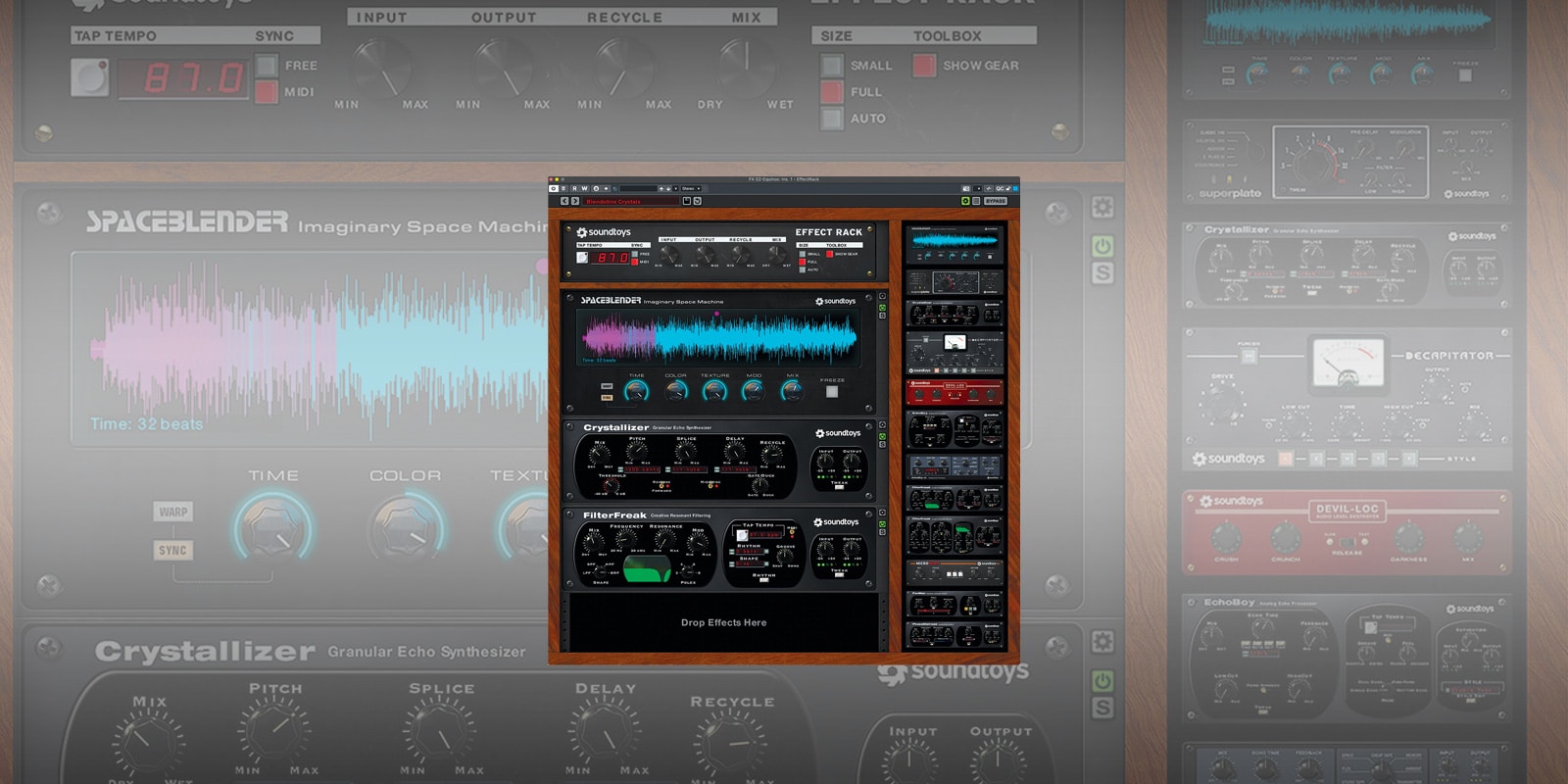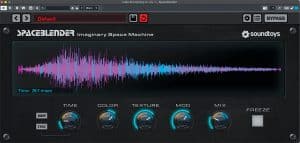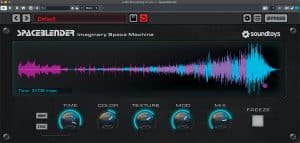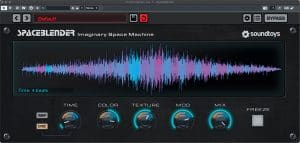I like my reverb shaken and stirred!
If you thought every corner of the reverb multiverse had been explored, as it so often does in the world of plugin effects, Soundtoys is here to make you rethink this classic spatial effect with its new, aptly named SpaceBlender.
A Reverb Synthesizer of Sorts
While SpaceBlender is an algorithmic and capable of some ‘normal-ish’ reverb-type spatial effects, we can just politely say, rooms, halls, plates and general ambience are, by design, not its thing.
Rather than relying on formulas, physics or convolution to simulate realistic spaces, SpaceBlender uses a form of swarm synthesis (inspired by the super-rare Swarmatron synthesizer) to focus on the unreal. In a very tangible sense, SpaceBlender is a very much a “reverb synthesizer.” If I had to find a traditional style of reverb to use to describe SpaceBlender, I would say some of its characteristic traits, like how it deals with reverb time and the reverb tail, are closest to a non-linear reverb. Still, even there, it goes far beyond that implication as well.
Soundtoys describes SpaceBlender as an “Imaginary Space Machine,” and hopefully, it will all become a bit clearer as we dig into the functions and controls.
Mission Control
Despite its deep, malleable nature, the functions and controls are distilled down to five simple knobs, three buttons and a small draggable dot in the animated display.
SpaceBlender starts with the Time knob with a throw of 100ms up to 60 seconds of reverb time. Two additional controls let you Sync the time to the project tempo, and apply Warp, which bends the pitch of the reverb as you adjust time, resulting in something similar to speeding up or slowing down analog tape.
The next knob is Color, which makes the reverb bright and clear or dark and ultra-murky. It works in tandem with the Time control and applies the chosen tonality over time as the reverb grows or decays.
The Texture control can be thought of as similar to a combination of diffusion and density. At high values, the reverb signatures can be thick, lush, smooth and dronelike—almost an impenetrable wall of verb. At lower settings, the reverb is sparse, open and nearly delay-like.
Mod, short for modulation, is typically used to add movement and motion to reverb tails. Here, like everything else in SpaceBlender, it is taken to extremes, offering not only fluid, psychedelic trippiness but also the potential to become gently destructive and degrading over the length of the reverb trail.
The final control dial, Mix, is self-explanatory. That leaves the Freeze button. While Freeze is ‘modern-reverb typical’—used to literally freeze a section of a reverb tail and turning it into a looping drone, in SpaceBlender, it remains evolving.
The Visualizer
Soundtoys calls its animated display the Visualizer. In addition to seeing a visual representation of the interaction between the dry incoming signal and the resulting reverb, this section is also playable. A small, click and draggable purple dot manipulates the reverb’s attack and decay characteristics, the evolution of the reverb over time on the X axis, and the general size and shape of the reverb envelope on the Y axis.
By moving the dot, you can craft a reverb that slowly fades in and sharply cuts off non-linear style, hits hard and decays super slowly, peaks in the middle and dies out just as quickly, and everything in between.
In Use
If ambient and electric sound design is your thing, SpaceBlender is a dream machine for creating drones, deep spatial rifts (and riffs) in time, and the sound of falling through space. And yet, this is not an ultra clean, wispy smooth, spatially wide drift box where your source sits happily in a thin veil of verb. SpaceBlender has a beautiful, grainy grit to its sound and a sonic signature that is like crawling through a dense atmosphere of sound.
From a sound design standpoint, this is a reverb that you will want play like a synth and automate as you create evolving textures.
A Little Bit Normal
Having said that, don’t think SpaceBlender is just for weird sound designer effects junkies. It has plenty of uses in “normal” music production as well. At super short durations on an electric guitar it simulates a mean, gritty sounding spring-reverb. It makes one heck of a non-linear style snare verb, and on vocals can produce some great slapback vocal effects, or even plate tones.
Another benefit is timing reverb to the tempo of a song, set it in beats, and adjusting the attack and decay to perfectly fit the track. A perfectly timed decay can give a track a sense of space, while keeping excessive decay from cluttering the mix.
Rack It Up
Close to the release of SpaceBlender, the company also updated its Soundtoys 5 Bundle to version 5.5 stocked with all 23 of the company’s plugins, including SpaceBlender and Effects Rack, which allows you to rack, stack and chain multi-effect combinations from the 5.5 Bundle.
If you are at a loss for where to start in either SpaceBlender or Effects Rack, there are a plethora of expertly designed presets to get you started.
Wrap Up…or Warp Up
It’s rare in the world of reverb plugins to find one that truly explores new, uncharted territory. Soundtoys SpaceBlender does just that. Beyond its tonality, spatial sound signature and scope, I am genuinely impressed at how Soundtoys has expertly distilled the processes and curated the controls to make this plugin a joy to use. SpaceBlender is a super-effects reverb that you play, and a very musical one at that.
Price: $99
More From: soundtoys.com






